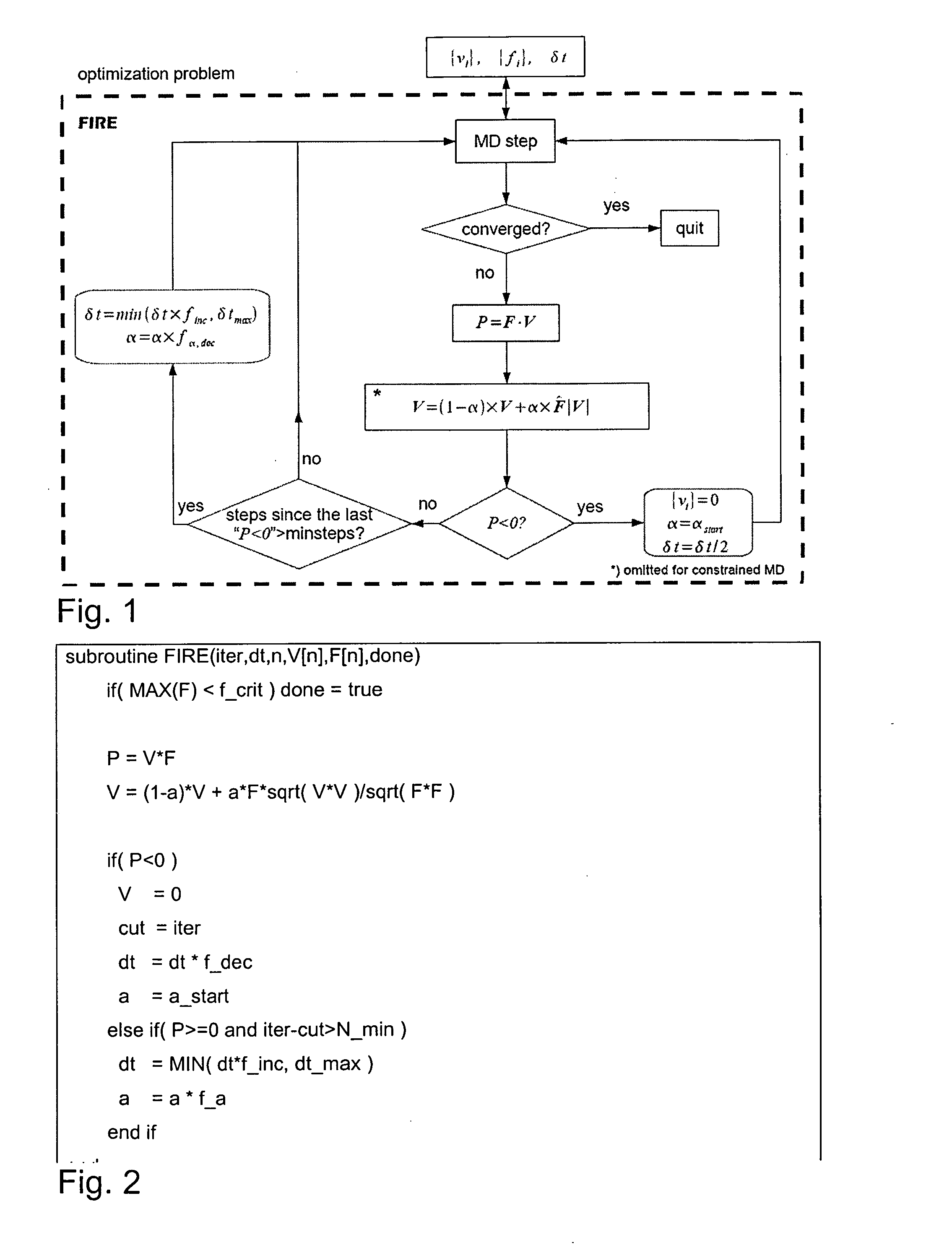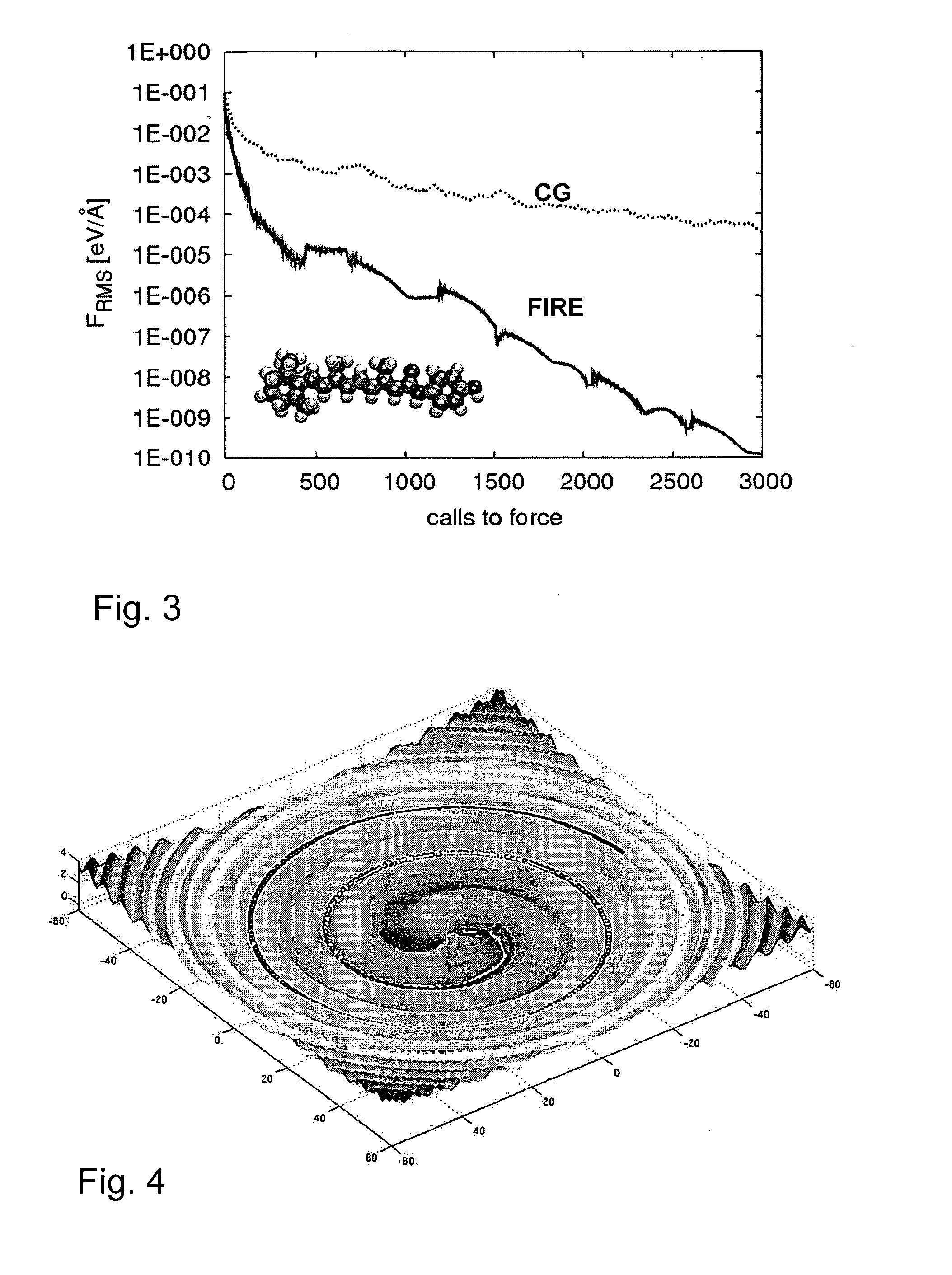Method for calculating a local extremum, preferably a local minimum, of a multidimensional function E(x1, x2, ..., xn)
- Summary
- Abstract
- Description
- Claims
- Application Information
AI Technical Summary
Benefits of technology
Problems solved by technology
Method used
Image
Examples
Embodiment Construction
[0011] It is therefore an object of the invention to provide a method for calculating a local extremum, preferably a local minimum, of a multidimensional function E(x1, x2, . . . , xn) which is interpretable as a function of potential energy with spatial coordinates (x1, x2, . . . , xn), using an iteration process based on a molecular dynamics based quenching method that enables conducting the search for local extremum faster compared to standard methods. Further the inventive method shall be more effective and robust than known comparable methods.
[0012] The solution of the object on which the present invention is based is set forth in claim 1. Features which further develop the inventive idea are the subject matter of the subordinate claims and can be drawn from the further description with reference to the preferred embodiment.
[0013] The invention represents an extremely fast and accurate method and technical realization to find the local minima of a multidimensional function. T...
PUM
 Login to View More
Login to View More Abstract
Description
Claims
Application Information
 Login to View More
Login to View More - R&D
- Intellectual Property
- Life Sciences
- Materials
- Tech Scout
- Unparalleled Data Quality
- Higher Quality Content
- 60% Fewer Hallucinations
Browse by: Latest US Patents, China's latest patents, Technical Efficacy Thesaurus, Application Domain, Technology Topic, Popular Technical Reports.
© 2025 PatSnap. All rights reserved.Legal|Privacy policy|Modern Slavery Act Transparency Statement|Sitemap|About US| Contact US: help@patsnap.com



